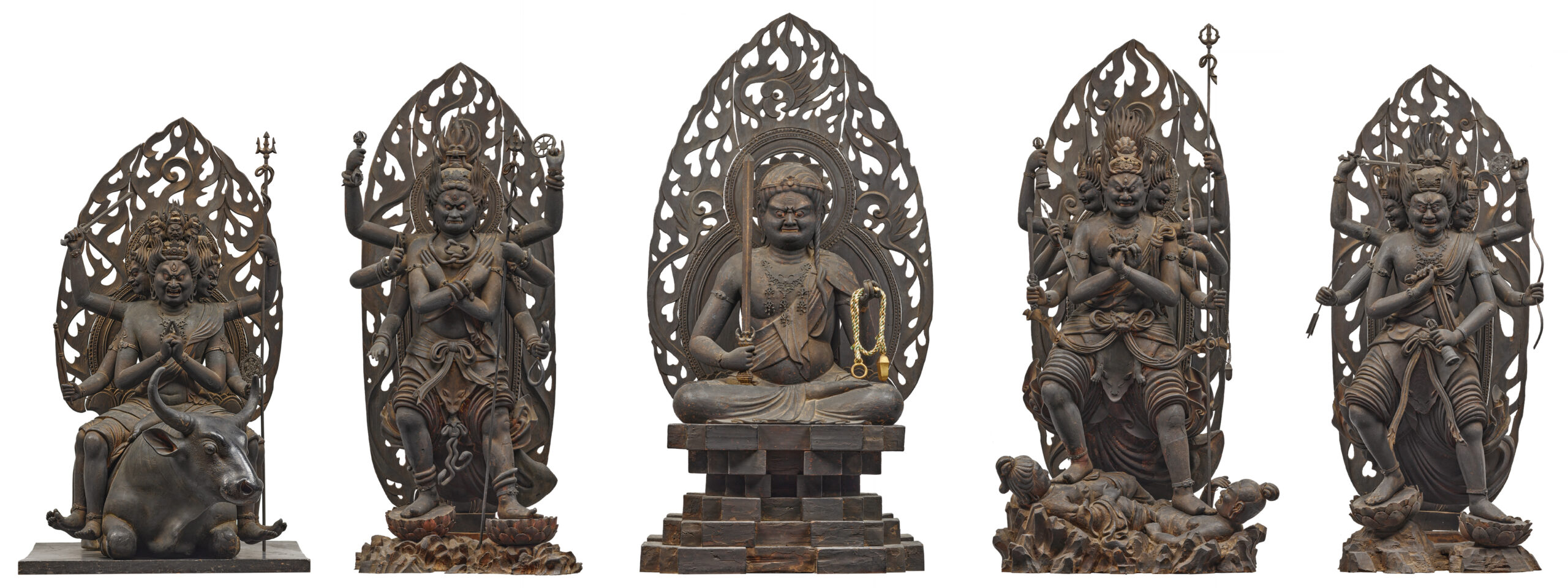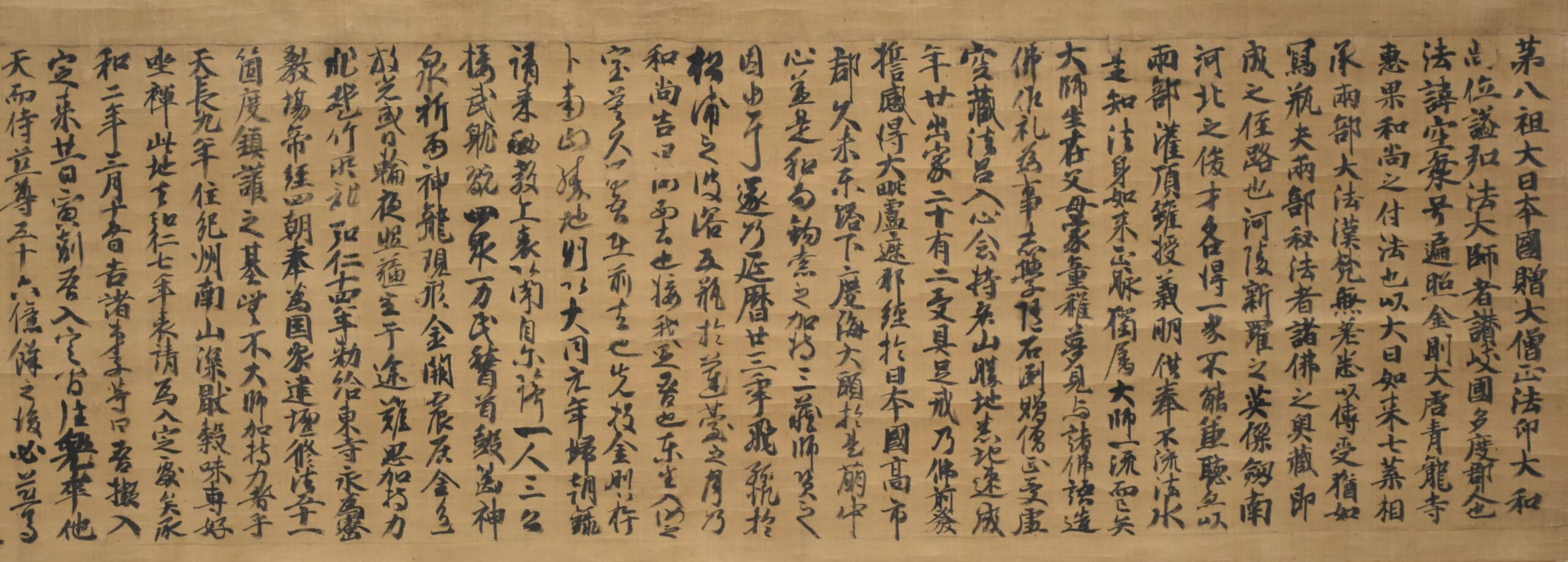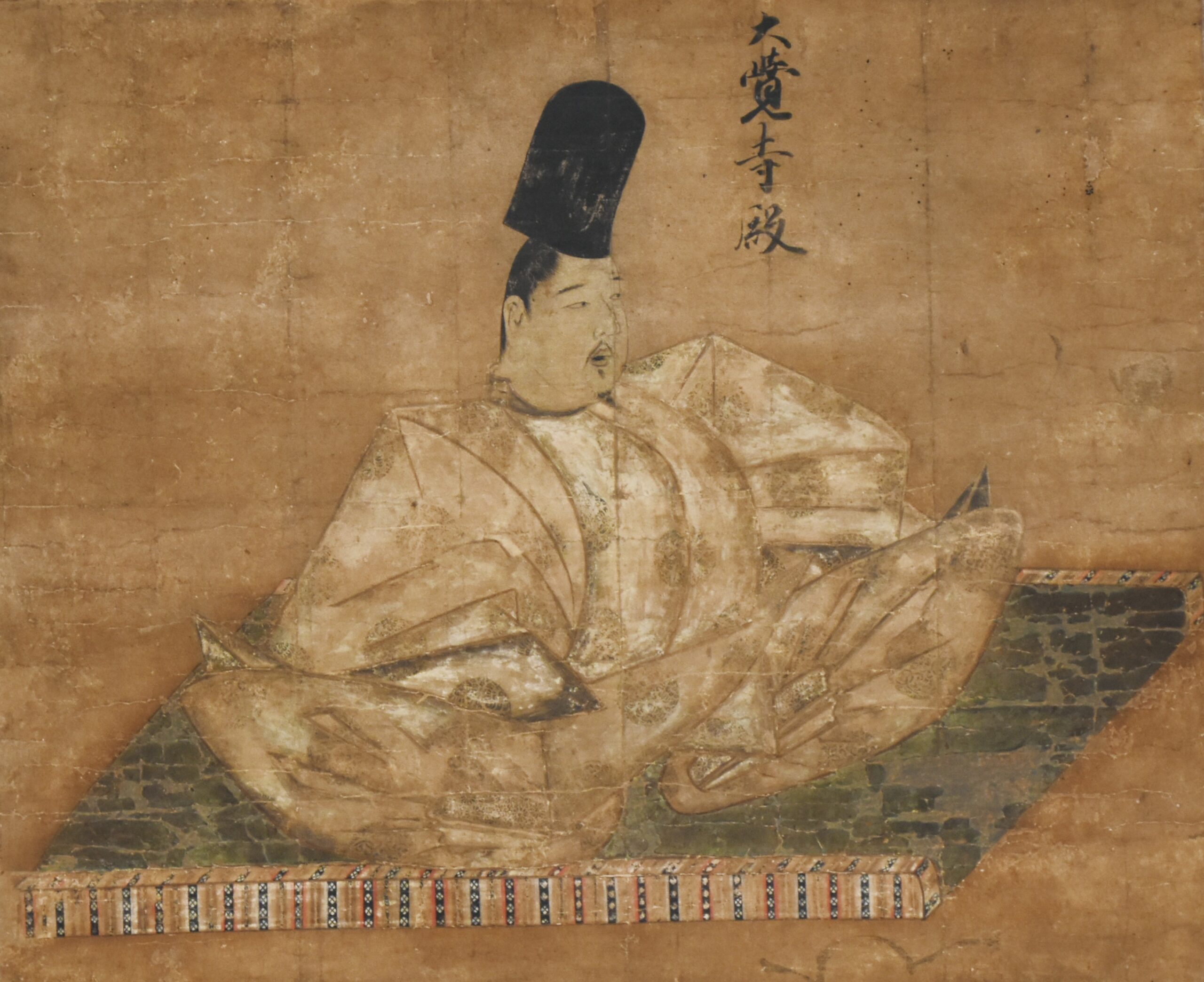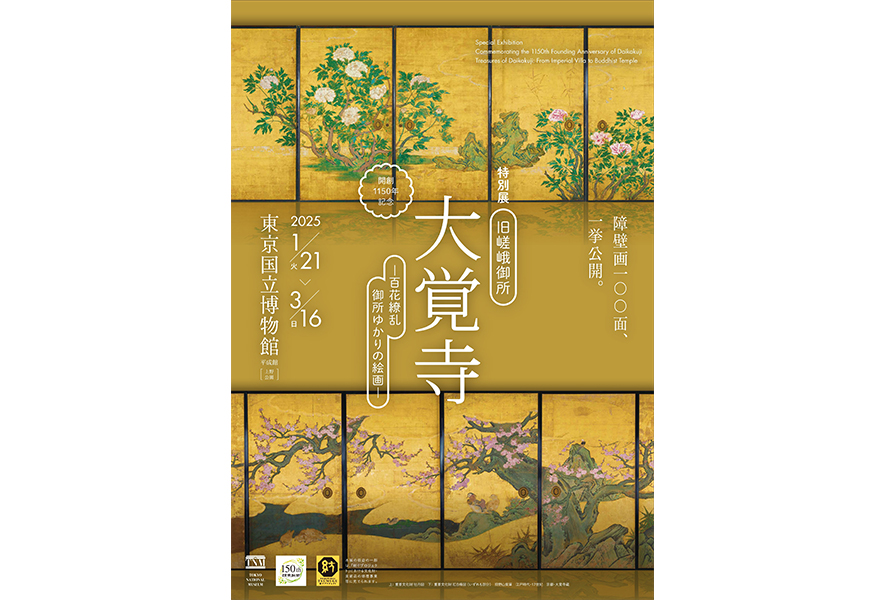Term: 21 January (Tue.) 2025 – 16 March (Sun.) 2025
Open: 9:30 am – 5 pm (Last admission 30 minutes before closing)
Closed: Mondays (except for February 10 and 24), and Tuesday, February 25.
Venue: Heiseikan, Tokyo National Museum (Ueno Park)
Official website: https://tsumugu.yomiuri.co.jp/daikakuji2025/english.html
Exhibition Overview
Daikakuji (大覚寺) Temple traces its roots to the Heian period (794–1192), a golden age of Japan’s imperial court. Elite members of the court often retreated to northwest Kyoto’s picturesque Saga (嵯峨) area for recreation, and it was on this site that Emperor Saga (786–842) chose to have the detached palace Saga-in constructed. On the advice of the venerated monk Kūkai (空海) (774–835), Emperor Saga enshrined statues of the Five Great Wisdom Kings (no longer extant) in his private Buddhist hall. In 876, over thirty years after the emperor’s death, his daughter Princess Masako (正子) petitioned to have the estate converted into Daikakuji Temple.
-scaled.jpg)
Important Cultural Property, Peonies(detail), By Kanō Sanraku, Edo period, 17th century, Daikakuji Temple, Kyoto

Important Cultural Property, The Five Great Wisdom Kings, By Myōen, Heian period, 1177, Daikakuji Temple, Kyoto
Over a millennium has passed since then, and the temple is celebrating its 1150th anniversary in 2026. As a prelude to that event, Daikakuji is pleased to present this exhibition showcasing its temple treasures. These include painted sliding doors from the Shinden (宸殿)—a building reportedly constructed to be the living quarters of Tokugawa Masako (徳川和子) (Tōfukumon-in (東福門院); 1607–1678) when she married Emperor Go-Mizunoo (後水尾天皇) (1596–1680) and later partially relocated to the center of the temple’s precincts. Its paintings have collectively been designated an Important Cultural Property and include masterpieces by the iconic artist Kanō Sanraku (狩野山楽) (1559–1635). In addition to over 120 of these painted panels, the exhibition features celebrated esoteric Buddhist works, like manuscripts brushed by emperors that trace the history of faith at Daikakuji as well as the Five Great Wisdom Kings, a renowned set of statues from the late Heian period by the master sculptor Myōen (明円) (d. 1199).

National Treasure, Biography of the Monk Kūkai (Kōbō Daishi) in Emperor Go-Uda’s Handwriting(detail), By Emperor Go-Uda, Kamakura period, 1315, Daikakuji Temple, Kyoto, The rotation schedule: 1/21 (Tue.) – 2/16 (Sun.)

Important Cultural Property, Emperor Go-Uda, Kamakura period, 14th century, Daikakuji Temple, Kyoto The rotation schedule: 1/21 (Tue.) – 2/16 (Sun.)
Term: 21 January (Tue.) 2025 – 16 March (Sun.) 2025
Open: 9:30 am – 5 pm (Last admission 30 minutes before closing)
Closed: Mondays (except for February 10 and 24), and Tuesday, February 25.
Venue: Heiseikan, Tokyo National Museum (Ueno Park)
Official website: https://tsumugu.yomiuri.co.jp/daikakuji2025/english.html

